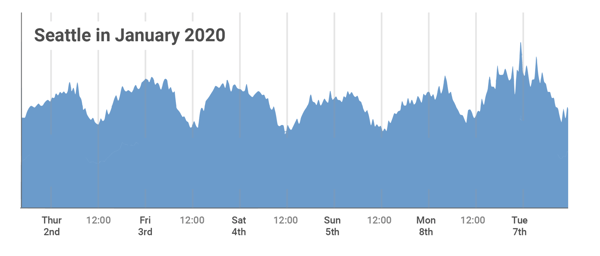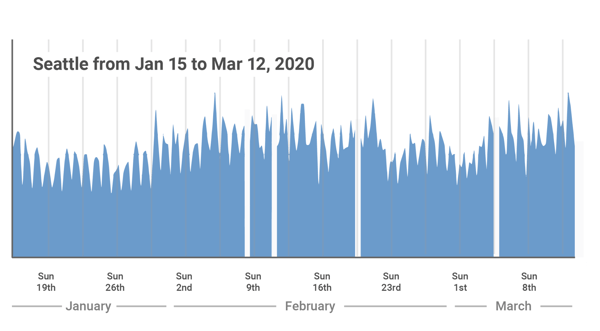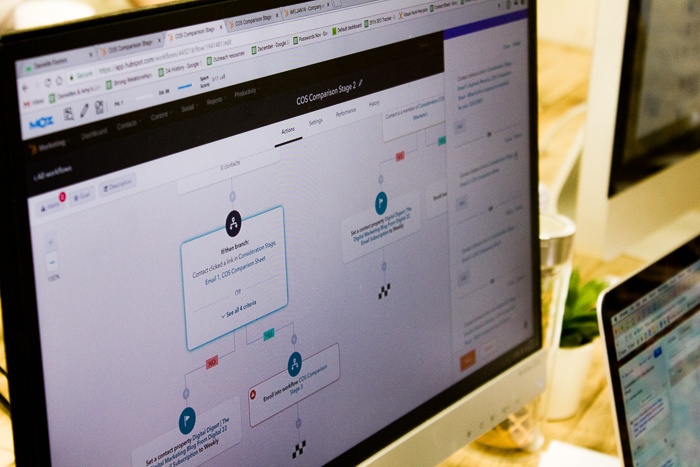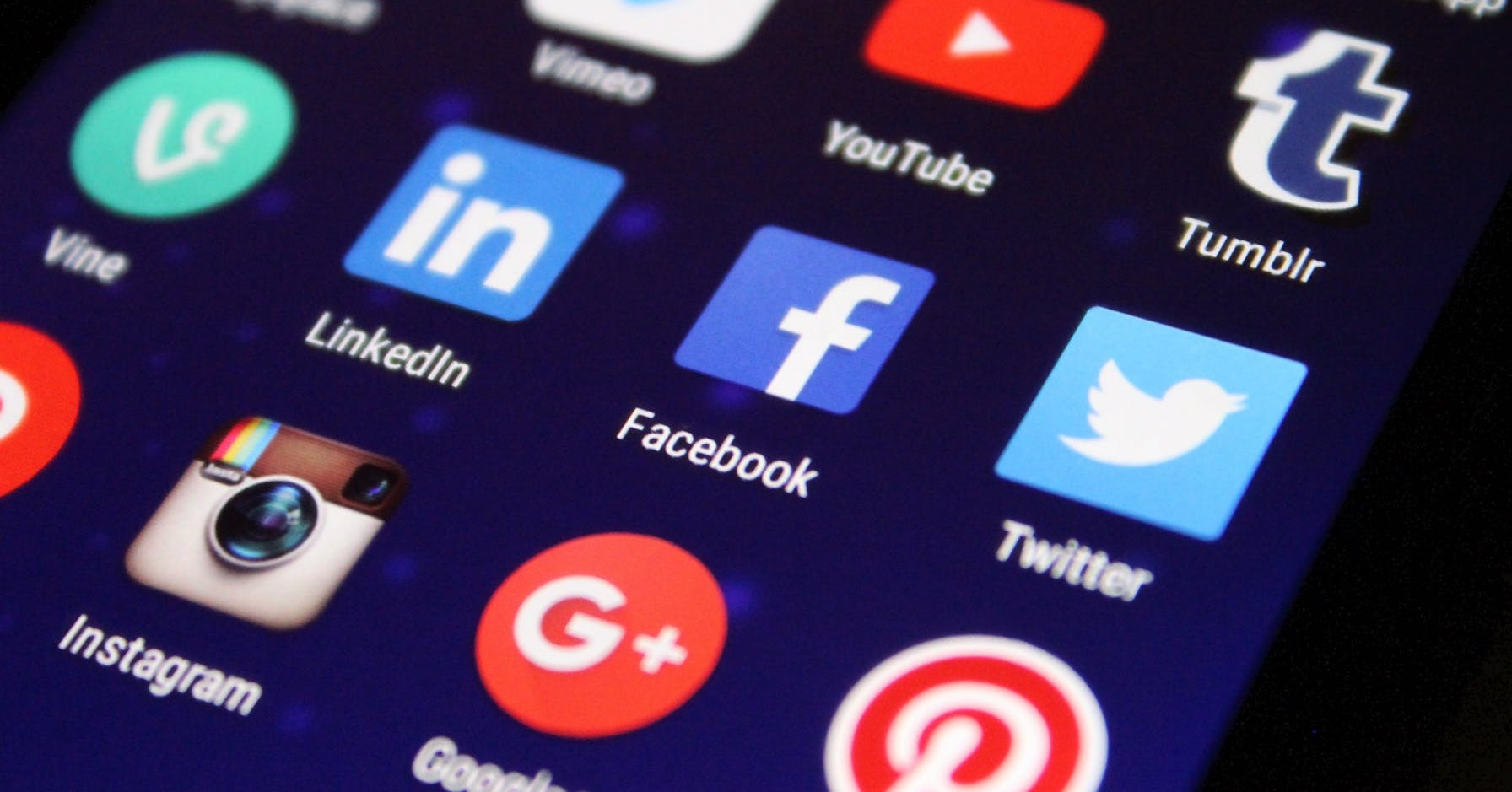Workflows are under appreciated and to some marketers, they may seem like a long winded task. I...
From floods to fires, 2020 has already been a testing period. We’re now sadly at a stage where every individual and business all over the world is feeling the impact of the coronavirus pandemic. Although governments and public health officials are taking relevant action to slow down the spread of this disease, it’s completely natural for you to wonder what’s next. Here's an in-depth look at the impact of coronavirus in marketing.
* If you'd like to get straight to the tips and advice, click here.
Event cancellations, business closures and the uncertainty will naturally lead to smaller marketing budgets and other knee-jerk decisions which could impact future opportunities.
Our industry is no different. We’re in the same boat. We understand the challenges. And I’m not here to sell you a product or service.
But it’s not the time to sit back and think of the worst. Human creativity, resilience and determination are powerful, so it’s time to be agile and switch up methods amidst this COVID-19 global outbreak.
It’s time to use this valuable time to refine strategies so when the smoke clears, we’re all ready to go again. Here’s the impact it’s having, what the data out there currently shows us and some valuable tips for you to take away and action.
What’s happening right now?
Everyone’s feeling the impact. From Far East Asia through to Europe and the United States, brands and businesses have either suspended business indefinitely or delayed marketing campaigns in light of isolation recommendations.
We’ve even felt it at Digital 22. One day it’s business as usual in our office and the next, we’re all working from home while still providing the level of service our clients expect.
Nike has shut down stores across the US, Canada, Western Europe, Australia and New Zealand. Apple, Microsoft, Patagonia, Glossier, Urban Outfitters - all just a handful of businesses that have closed retail locations in the wake of this unprecedented pandemic.
The trend has continued. Zara. Adidas. River Island. Every day, there’s a new email in my inbox informing me that they’ve decided to shut their stores for the foreseeable future.
Then we need to think about the smaller, independent businesses that are suffering on a global scale, especially if they don’t have an online presence. Although, Facebook has now launched a new business resource hub for businesses impacted by coronavirus.
We also can’t overlook the impact it’s had on the sporting world either with leagues and tournaments pretty much suspended worldwide. Everything from business to sport and everyday life has come to a halt and business is no different.
As a result, it means more people will be stuck indoors - which suggests internet usage could be higher than ever. If you have an online presence, then this high period of internet use can benefit you once this blows over, especially with inbound marketing tactics.
What does the data say?
Internet usage is high and will continue to increase.
As people around the world now alter their daily lives through home working and social distancing, internet traffic patterns are either bound to change or have already seen some differences. The likes of YouTube and Netflix have already lowered the streaming qualities to stop the internet from breaking while Universal Pictures is offering cinema releases at home for rental prices.
Oh, and these changes are on a worldwide scale. Not just in Europe.
Cloudflare released an interesting report this month where they looked at internet usage in Seattle, Italy and South Korea from their points of presence.
Seattle.
Here’s a look at a normal pattern from the middle of January 2020. It shows that internet use was lower at the weekend, it dropped during the night and picked up again in the morning - as you’d expect.
However, January 30 saw the first big change as there was a big spike and traffic has remained elevated since.
Why’s that interesting? The first reported case of COVID-19 in the Seattle area was on January 21.
Then, a small number of employees from Amazon, Microsoft and Facebook were infected in early March. With encouragement to work from home, internet usage grew greatly with fewer troughs during the night.
People are using the internet more and for more hours. Traffic is now up by 40% and weekend growth has also increased.
Northern Italy.
Northern Italy has been an area where the situation has been at its worst in Europe. The COVID-19 outbreak resulted in a local quarantine before a nation-wide lockdown. Looking at the data from Cloudflare’s Milan point of presence, a somewhat normal period of internet usage in January skyrocketed in March.
Since then, traffic has increased by over 30%. Internet usage is also now up at all hours of the day and night while traffic has started to ramp up earlier in the morning compared to January’s data. What’s most interesting is that the spike in traffic started on the evening of February 24 - when the first cordon sanitaire was put into place.
The way people in Northern Italy are using the internet has changed as well.
- Online gaming is up by 20%.
- Online chat systems are now up to three times the normal usage.
- Video streaming has doubled.
- People are accessing information and news websites up to 60% more than previously.
South Korea.
Compared to Seattle and Northern Italy, there hasn’t been a huge shift in South Korea. The only noticeable difference is that internet traffic is up by about 5%. Here’s a quick look at how the internet is being used by those in South Korea now:
- Online gaming is up by 30%.
- Online chat systems are now 1.8 times more than the normal usage.
- Traffic to websites offering anime streaming has doubled.
Interestingly, there’s one thing which connects the internet traffic of people in Northern Italy and South Korea. The same study has also revealed that traffic associated with fitness trackers is down because of people not being able to go to the gym to take part in exercise, sports and other activities.
So what does the situation look like in the UK?
The pattern carries over from the Far East throughout Europe, the UK and even the US. In the US alone. it’s thought that, as a whole, there’s been a 13% increase in usage and peaks at around 11am which is a little unheard of.
In the UK, both TalkTalk and Vodafone have reported surges in internet use. In some European countries, Vodafone’s internet usage has increased by up to 50% and in the UK, that figure is around the 30% mark.
TalkTalk, on the other hand, has reported a traffic increase of 20%.
Although the increase in data comes from a range of activities from children playing games to people streaming media, the increase in traffic is coming around lunchtime, thanks to the working from home situation.
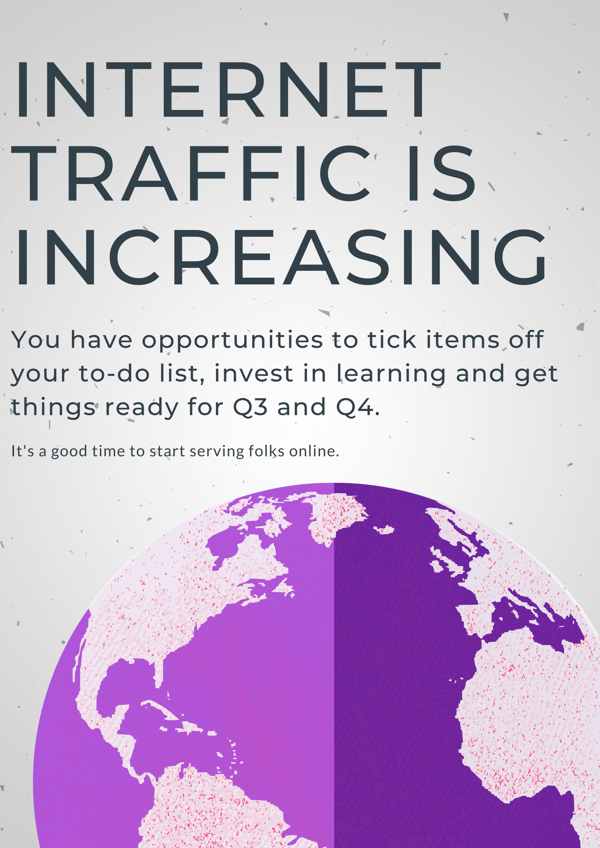
As you can see, the data suggests traffic has already increased. Expect this to rise even further as more people are forced online by restriction or working from home and for you and your business, that could mean a lack of face-to-face activities.
However, this can still present you with an opportunity to get items off your to-do list, invest in learning or get things ready for later in the year. Anything you didn’t have the time to box off during your busy sales period - do it. It’s the time to update your website. It’s a chance to review your marketing strategy. It’s the opportunity to fine-tune the little details that strengthen your brand’s visibility and authority.
It’s a good time to serve folks online.
Coronavirus in eCommerce - the data is a little hazy.
On the surface, the premise is simple. People are social distancing and don’t want to go out - so online shopping is the go-to answer. Although, the data is a little more complicated than that as we don’t know exactly how much of an impact it’s going to have. But with the uncertainty, lockdowns and working from home, spending habits, priorities and online behaviour are all likely to change.
Expect more people to shift to online purchases as they look to avoid public places. Even with supermarkets full to the brim, don’t be surprised to see online delivery slots fully-booked either. That’s from a customer perspective.
Among retailers, there’s a mixed outlook and some understandable uncertainty.
A recent survey featuring 304 retailers conducted by Digital Commerce 360 picked up on confusion and uncertainty among retailers. When asked what impact they believe the coronavirus will have on their eCommerce business, here’s how they answered:
- Up significantly: 8%.
- Up somewhat: 30%.
- As projected: 26%.
- Down somewhat: 32%.
- Down significantly: 4%.
Obviously, the answers vary from industry to industry as pharmaceutical retailers or those selling hand sanitiser will see increases. However, the key takeaway is that the majority of retailers expect their eCommerce sales to decline.
Those same retailers were asked what they’re doing to respond to the coronavirus outbreak.
- Taking aggressive action: 20%.
- Taking some action: 44%.
- Taking a wait-and-see approach: 36%.
A solid piece of advice here is to not be a part of that 36% and wait-and-see. Although we need to wait and see how big of an impact coronavirus delivers to the economy, your efforts should be more on leveraging all of your assets to keep up with consumer demand.
For eCommerce, there are going to be winners and losers depending on your industry. Outside of the obvious healthcare and grocery sectors, some areas will see a lot of growth.
- Home, garden and home office supplies. With more people working from home, they’ll want to build a suitable office space. Even I went to buy a desk from Argos to upgrade from the sofa and noticed a bunch were out of stock. That’s why the likes of Argos, Staples and IKEA could do really well.
- Luxury comforts that people miss in the office, such as coffee machines as they spend more time at home.
- Home study and entertainment. More time at home for adults and children means there’s more time to wind down or study. Expect those selling books and games to receive a boost.
But on the other end of the spectrum, some could suffer slightly. That’s if people want to continue purchasing a lot with concerns over contact with deliveries. Although, some retailers are mitigating this risk already with ‘no contact’ deliveries.
Fashion could be a big one. With people staying indoors and many public places shut, there’s less of a desire to purchase new clothes. However, Google Trends has shown loungewear is getting a lot of interest, so they can adapt with people wanting to be comfortable at home.
In his blog, eCommerce specialist Luke Carthy highlighted a tweet from Steve Paine where he made a great point about Primark. High-street exclusive brands like Primark could feel the brunt of this pandemic as they only operate in brick-and-mortar locations.
Primark. Refusal to sell online (presumably to gain better deals in shopping markets and high streets) could be the biggest mistake made in retail.
— Chippy (@chippy) March 15, 2020
This highlights the importance of having an online presence, allowing you to pivot and focus your attention on consumer demands through a different channel that offers plenty of value.
Social engagement is down. And it will change day-by-day.
Although it’s a more ‘in the moment’ technique and with various platforms where people get their news, social engagement is down across the board. Don’t let that get you down, though if you use social media for your business - if you can connect thoughtfully with your audience then it’s a good start.
Again, it can all vary from industry to industry. For example, expect universities and education accounts to receive high engagement as they deliver important information to students.
Facebook and Instagram have taken a big engagement hit while Twitter’s decline is reportedly only half of the former two platforms. That’s because people are turning to Twitter for up-to-date news and updates as it’s instant compared to platforms which are reliant on algorithms.
It’s also easier to connect 1:1 with brands to get information, so you should continue focusing on this channel. However, you need to stay calm and show empathy. Make sure your messaging is always thoughtful, relevant and helpful to your audience.
Also, be there for them when they have concerns.
The recently-released 2020 Social Media Industry Benchmark Report has also revealed some interesting findings regarding social media engagement. Here’s a quick glimpse at the types of engagement rates you can expect right now. Again, it all depends on how this situation advances.
Instagram.
Instagram has taken a huge hit with a 14% drop in engagement. It’s not a place where people get their news or connect with family and friends, so the engagement could continue to drop rapidly compared to other platforms.
The likes of alcohol, home decor, food and beverage have all taken a hit this past month. However, one thing to keep an eye on is the new ‘stay home’ sticker Instagram has released, encouraging social distancing. The more that people utilise it, the more engagement rates could increase.
Facebook.
Facebook is also declining similar to Instagram amidst the coronavirus pandemic with a 13.5% drop in engagement. The biggest declines revolve around hotels, resorts and sports teams despite a lot of engagement earlier in the year. With cancellations and bans, these industries are suffering.
The difference with Facebook is that there’s a spike in activity, mainly because friends and families are connecting with each other and want to find community news. However, brands and businesses aren’t enjoying the most success, especially with algorithms in place.
Twitter.
There’s been a more gradual engagement dip on Twitter compared to Facebook and Instagram. It’s only suffered a 7% hit as people are turning to Twitter for vital information about coronavirus and how it’ll impact their lives.
Despite some declines in industries, the anomaly is higher education. Without high engagement in this industry, Twitter’s engagement could be much lower. Universities providing in-the-moment to students who need to know what their next steps are.
Nearly every channel is seeing a drop in engagement - some more than others. However, the decline on Twitter isn’t as severe so ensure you have timely and relevant content to share to help your engagement rates for now.
If your numbers are a bit upside down this week, you're not alone. (Thread)
— John Bonini (@Bonini84) March 18, 2020
I just wrapped our weekly marketing team meeting, and while I typically show a cumulative view of our numbers in comparison to our goals month-to-date..... pic.twitter.com/4ffJRdCVkH
You know the situation. I’ve given you some insight into what the data as of today suggests so the next step is to provide you with some actionable advice you can try out.
Actionable tips and advice for moving forward.
To start, not every industry out there can take this as gospel. The solutions, fixes and tactics aren’t a one-size-fits-all approach and what could work for one industry might not work for another. However, businesses can’t be stagnant - you need to act.
For travel and hospitality, these are challenging times so this advice might not be the most applicable. If you sell pharmaceutical goods, hand sanitiser or even toilet roll, you’re probably doing just fine right now. This advice will apply to those in the middle that have adopted the inbound methodology - like us at Digital 22.
So what is it we can do?
Patience. Inbound is a long game.
It’s probably one of the most frustrating things new adopters of inbound discuss. The fact it can take a while for things to rank and gain visibility but in this case, it’s fine. If you use inbound marketing tactics then right now, everything that’s taking a hit for your business is what you did six to nine months ago.
It’s fine. Nobody really prepares for a catastrophe like this, so focus on the future. You’re playing the long game with inbound marketing. Everything you’re doing right now isn’t for this period. It’s to boost your results in Q3 and Q4 so the more you neglect doing things right now, the more it’ll hurt results later this year.
When normality is restored, everything will be loud.
When things get back to normal, Q3 and Q4 could be bonkers. Everyone is thinking long-term, everyone has targets to hit in 2020 and every business will try to make up for it at the back-end of this year. That means expect a rise in content sharing, ads, emails and more.
Budgets are being saved right now, giving you a chance to come back with a bang. Again, it’s the inbound process. The actions you take now are what will impact those Q3 and Q4 results. If you do SEO, blogging, eBooks and anything else to drive organic traffic, do it now so you’re ahead when the time comes and get firing on all cylinders.
Don’t stick to the norm.
Although Q3 and Q4 could be big, the same old stuff won’t work any more. As I said, everyone has targets to hit and they’ll push their messaging out. That’s a lot of noise for you to compete with. Plus, combine the noise and the same old tactics that happen all the time and you don’t have a winning formula.
Take this time you have on your hands to make your marketing comeback great. Think about the tactics you’ve wanted to try and areas you’ve considered putting your budget before. The time you have allows you to get more creative and do something out of the box.
For tactics like email and social which are more in the moment, think about using things like video so your messaging is more appealing.
High internet usage = educate your database.
I’ve already touched on how internet usage will increase during this period. Whether that turns into a positive, however, depends on your industry. With more people working from home and spending longer on the internet, this gives you a great opening.
It allows people to research more than they ever could and move forward pieces they couldn’t complete in the office. Although they might not purchase from you or anyone else, this is the perfect chance for you to educate prospects and fill your database with high-quality MQLs.
So once this is over, you have an engaged database that could be ready to speak to you.
Focus on your website. Don’t rely on a third-party.
Some channels are quite vulnerable, especially third-party ones if you rely on them entirely. If you do, then you’re not in control and the situation could be out of your hands.
Let’s say your main platform for selling is Amazon. Amazon is no longer accepting new shipments and stock which means your products won’t go anywhere and you’ll lose out.
Then there’s Shopify who are shutting down resellers.
Rather than focusing on a third-party, consider having your own website instead where you’re in control. In times like these, having an online presence is paramount if you want to maintain relationships with your customers and prospects.
Delight your existing customers.
Lead generation is key, but don’t neglect your existing customer base. Use this time to delight them further and keep them as promoters. It can be something as simple as publishing relevant content that answers their queries or eases their worries.
In a sensitive time like this, your existing customers might also have lots of questions and want instant answers.

A fix to this could be implementing a chatbot so no customers slips through the tracks. A positive experience can delight them further and make them stick with you during this difficult time.
In general, be there for prospects and existing customers. If they can’t see you in person, arrange video meetings which are pandemic-proof and means you don’t neglect anybody. As a knock-on effect, it also humanises your brand.
Use your saved budget to boost your online presence.
A wait and see approach probably isn’t the best piece of advice. Brick and mortar stores are likely to struggle as footfall sadly dwindles and sales cycles will take a hit. Hopefully, this is short-lived but in the meantime, looking into online strategies during this time could be something which helps your business or even your customers.
By switching up strategies, you could look into CRMs and other tools to help the transition. With conferences and events being cancelled everywhere, it’s probably a better idea to use the extra budget to generate new leads rather than waiting and seeing how everything unfolds.
Other things you can try out here include:
- Use video marketing to stand out from crowded places.
- Create more engaging email marketing campaigns.
- Improve your website’s user experience if you have one.
- Ensure your website content is well optimised for SEO if you have one.
Show empathy when facing rejection…
During this pandemic, it’s more than likely we’ll all see projects paused and told that a deal is being delayed until this whole thing blows over. If you hear something like this, remember to respond with empathy or it could turn off your prospects and potential customers.
We’re all in the same boat and we’re all facing the same struggle. Show empathy and continue to nurture them by taking time to address their challenges. Even something as small as this goes a long way, especially when they’re ready to move ahead with the project or deal.
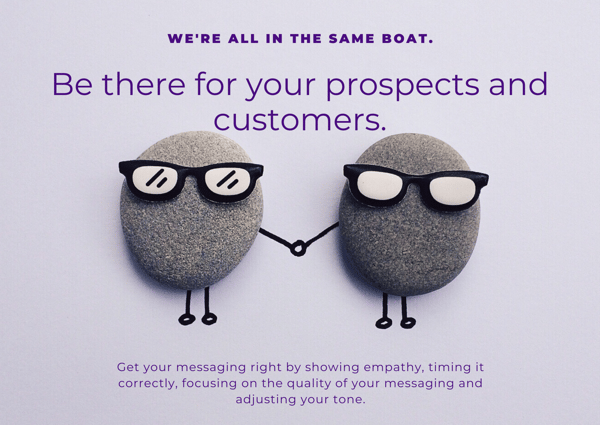
...and stay empathetic throughout your messaging.
Whatever you do, don’t put a gratuitous coronavirus spin on your content and messaging as it’s going to turn prospects off massively. Google and Facebook are already banning ads for face masks which capitalise off the coronavirus, so don’t let your content fall in the same category.
How you communicate during a crisis is just as important as how you act during one. A pandemic like the coronavirus shouldn’t be a hook for your business to push products and services to customers - especially if your product has zero value or isn’t related to what’s going on in the world.
Your audience has other things to worry about right now. If you take advantage of this situation and be sales-y, they won’t buy from you now and will remember your business as one that used this crisis as a sales pitch.
Do this and you lose the prospect.
Just look at this message from Polaris Bikewear offering a ‘pandemic promotion sale’ which didn’t sit well with the recipients.

Here’s how to get your messaging right during a sensitive period.
- Timing: Be aware of what’s going on around you. If there’s something bigger going on and you don’t have the solution, hold back on pushing your content. If you have solutions and advice that will be useful, communicate this quickly and effectively.
- Quality over quantity: Whether it’s blog content or social messaging, scale back and focus on creating a smaller volume of content that’s empathetic. There’s less attention to go around so ensure that the small amount of content you produce eases your audience’s concerns.
- Adjust your tone: Although I’m usually friendly and playful in regular Digital 22 content, this isn’t a situation which requires it. That’s how you need to adapt your tone as it’s not your time to shine - it’s time to empathise and tell them you’re there for them. If you have a tool which can help them like we have HubSpot, then simply explain how it’ll help them. That’s all. No long-winded sales pitch or trying to make light out of a situation.
It’s such a fine line to walk so combining the empathy with trying not to sell but offering value is so, so important.
At this stage, I wish there was a playbook or helpful guide that can help you through this tough time. The truth is, we all just need to figure it out as we go along. Hopefully, you have a better understanding of how coronavirus has impacted inbound marketing and want to try some of the tips I’ve highlighted above.
If you do have some time on your hands and want to fine-tune your marketing, then we do have an inbound marketing starter pack full of templates you can fill out and use for your campaigns.
Download your inbound marketing strategy pack.
For Q3 and Q4 to be a big success using inbound tactics, you need to start making moves today. However, getting started with inbound or improving it quickly isn’t something you can do overnight if you don’t know where to start. That’s why we have five ready-to-use templates to help you get started on the right path.
You’ll get templates for a content audit, workflow, buyer persona, conversion funnel and buyer’s journey. It’ll help you plan everything to help achieve the best results. Just click the link below if you want to get your copy.

